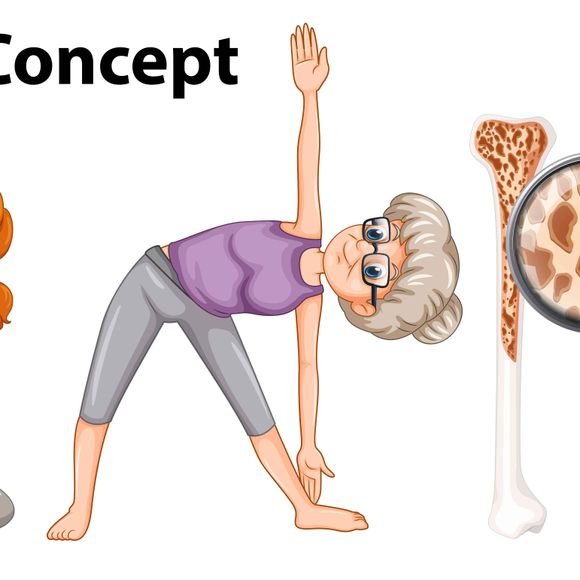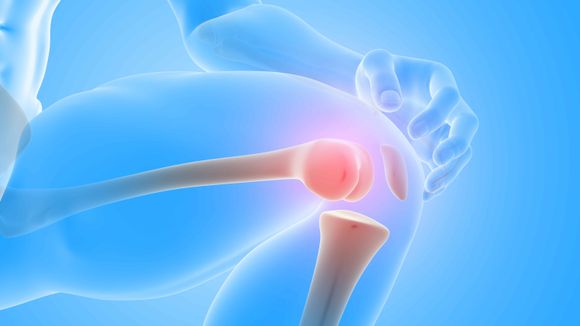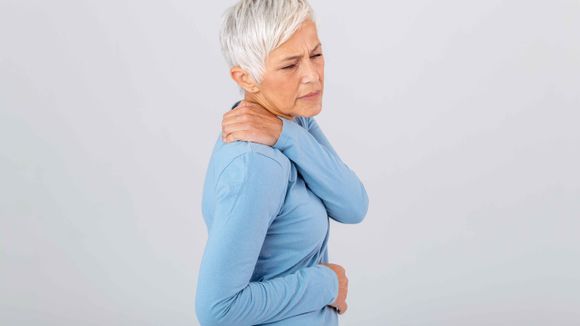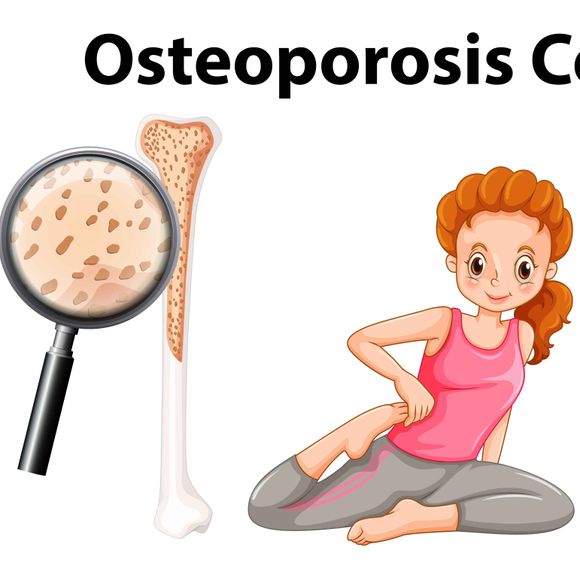What disease is osteoporosis
Osteoporosis is a condition that affects the bones. The name comes from Latin and means "porous bones". The inside of a healthy bone has small spaces, similar to a honeycomb. Osteoporosis increases the size of these spaces, leading to a loss of strength and bone density. In addition, the outer part of the bone becomes weaker and thinners. [ref. 1]

Like many other tissues in the human body, bone is living tissue that is continually broken down and replaced. Osteoporosis occurs when the creation of new bone does not occur at the same rate as the degradation of old bone tissue.
Osteoporosis affects people of all races. But white and Asian women, especially older women who have gone through menopause, are at the highest risk. Medications, a healthy diet, and exercise can help prevent bone loss or strengthen already weak bones. And why we call it "the silent disease" you will find out in the following lines.
Symptoms of osteoporosis
The early stages of osteoporosis do not cause any symptoms or warning signs. In most cases, people with osteoporosis don't know they have the disease until they get a fracture. That is why osteoporosis can be called the "silent disease" that develops for years and suddenly does its damage. [ref. 2]
Once your bones have been weakened by osteoporosis, the following signs and symptoms may appear:
- Back pain caused by a broken or bent vertebra
- Loss of height over time
- Hunched body posture
- A bone that breaks much easier than normal
Causes of osteoporosis

As we explained earlier, your bones are in a constant state of remodeling - new bone is created and old bone is broken down. When you are young, the body makes new bone faster than it breaks down old bone and bone mass increases. After the early 20s, this process gradually slows down, and most people reach their peak bone mass by the age of 30. As we age, bone mass is lost faster than it is created. This is what predisposes to the development of osteoporosis.
How likely you are to develop osteoporosis depends in part on how much bone mass you created in your youth. Peak bone mass is partially inherited and varies also according to ethnic group. The higher your peak bone mass, the more bone tissue there will be in the body and the less likely you are to develop osteoporosis.
In addition to these factors, however, diet, hormonal balance and physical activity are also crucial for maintaining optimal bone mass in both sexes.
Risk factors for developing osteoporosis

A number of factors can increase your likelihood of developing osteoporosis, including age, race, lifestyle choices, medical conditions, and medications used. [ref. 3]
Some risk factors for osteoporosis are out of your control, including:
- Gender. Women are much more likely to develop osteoporosis than men due to menopause and hormonal imbalance.
- Age. The older you get, the greater your risk of osteoporosis.
- Lineage. There is the greatest risk of osteoporosis for people of Caucasoid or race.
- Heredity. A parent, sibling with osteoporosis puts you at greater risk, especially if one of them has also had a fracture(s).
- Body structure. Men and women who have less body structure tend to have a higher risk because they may have less bone mass throughout life.
Other factors that you can influence with your behavior and habits, and which determine overall health, are:
- Sex hormones. Reduced levels of sex hormones predispose to weakening of bones. A drop in estrogen levels in postmenopausal women is one of the biggest risk factors for developing osteoporosis. Prostate cancer medications that reduce testosterone levels in men and breast cancer medications that reduce estrogen levels in women can accelerate bone loss. This can obviously be considered a risk factor for developing osteoporosis.
- Problems with the thyroid gland. Too high levels of certain thyroid hormones can cause bone loss. This can happen if your thyroid gland is overactive or if you are taking too many thyroid hormone medications to treat insufficient function.
- Function of other endocrine glands. Osteoporosis is also associated with increased levels of parathyroid and adrenal hormones.
- Low calcium intake. A lifelong lack of calcium plays a role in the development of osteoporosis. Low calcium intake contributes to reduced bone density, early bone loss, and an increased risk of fractures.
- Eating disorders. Severe restriction of food intake and underweight weaken bones in both men and women.
- Steroids and other drugs. Long-term use of oral or injectable corticosteroid drugs, such as prednisone and cortisone, interferes with the bone repair process. Osteoporosis is also associated with medications used to treat or prevent seizures, cancer, gastric reflux, and more.
- Other diseases. The risk of osteoporosis is higher in people who have certain medical problems, including: celiac disease, inflammatory bowel disease, kidney or liver disease, cancer, rheumatoid arthritis.
- A sedentary lifestyle. People who spend a lot of time sitting have a higher risk of osteoporosis than those who are more active. All exercises with weights and activities that promote balance and good posture through some resistance are good for your bones.
- Excessive alcohol consumption. Regular consumption of more than two alcoholic beverages a day increases the risk of osteoporosis.
Bone Density Diagnostic Test (DEXA)
To check for osteoporosis, a medical professional reviews your medical history and performs a physical examination. In addition, blood and urine tests can be done to check for conditions that can cause bone loss.
If a specialist determines that you are at high risk of developing osteoporosis, they will likely suggest a bone density test. This test is called bone densitometry or dual-energy X-ray absorptiometry (DEXA). This test uses X-rays to measure bone density in the wrists, hips, or spine. These are the three areas at greatest risk of osteoporosis. This test is painless and can take anywhere from 10 to 30 minutes. [ref. 4]
Treatment of the "silent disease"
If the results of this test shows that you have osteoporosis, the next step is an appropriate treatment and therapy plan. Typically, this includes medications, as well as lifestyle changes to preserve bone density and provide the necessary nutrients. These lifestyle changes may include an increase in calcium and vitamin D intake, as well as an appropriate type of sport.

In this regard, men and women between the ages of 18 and 50 need 1,000 milligrams of calcium per day. This daily amount increases to 1,200 milligrams when women turn 50 and men 70. Vitamin D is also needed for bone health it improves the body's ability to absorb calcium and improves bone health in other ways. Most people need at least 600 international units (IU) of vitamin D per day. This recommendation increases to 800 IU per day after the age of 70.
There is no universal cure for osteoporosis, but proper treatment can help protect and strengthen bones. Recommended medications and other measures can help slow the breakdown of bone in the body, and some measures can stimulate the growth of new bone tissue. [ref. 5]







